Growing Chinese cabbage
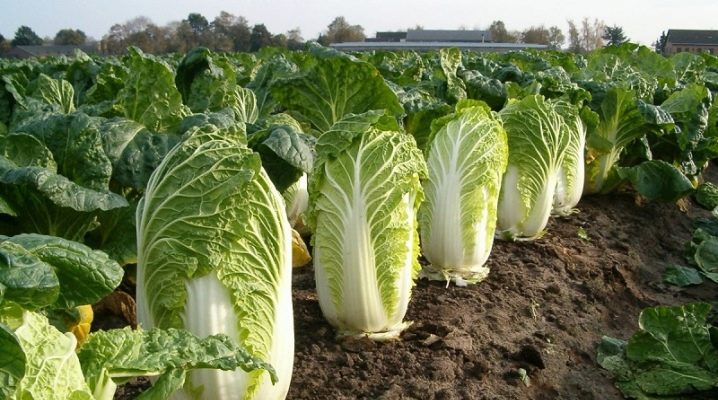
Peking cabbage or Peking salad is now grown on their plots by many gardeners. This plant is not very demanding. But in order to get a good harvest of green cabbage, you must first know the features of its cultivation.
Landing dates
First of all, you need to understand when it is best to plant young plants. Gardeners recommend to be guided by weather conditions. It is important to wait for warming. The soil when planting cabbage in open ground should be well warmed up.
As a rule, plants are planted in mid-April. Summer-autumn planting is carried out from mid-July to early August. You can choose more specific dates based on the lunar calendar.


The necessary conditions
An important role is also played by the conditions in which the cabbage will grow. When choosing a place to plant young plants, it is important to pay attention to the following points.
- The soil. Peking cabbage loves good quality fertile soil. Therefore, the beds for planting it have been prepared since the fall. Manure is introduced into the soil. After that, the garden is dug up. If this is not done, cabbages growing on poor soil will not form.
- Illumination. It is not recommended to plant cabbage in the shade. Due to the lack of light, heads of cabbage are not formed. Therefore, the beds should be located away from high fences, trees or bushes. At the same time, it is worth remembering that plants cannot withstand prolonged exposure to direct sunlight. Therefore, on hot days, it is recommended to shade the bushes with spunbond.
- Crop rotation. In order for the plants to get enough nutrients from the soil, it is very important to follow the rules of crop rotation. Chinese cabbage is usually planted after legumes, onions, or carrots. All cruciferous plants are bad predecessors for her.
When planting Chinese cabbage, it is important to choose the right neighbors for it. This cabbage can be planted next to spinach or watercress. Potato beds can also be located not far from it. To protect cabbage from pests, herbs are often planted next to it.
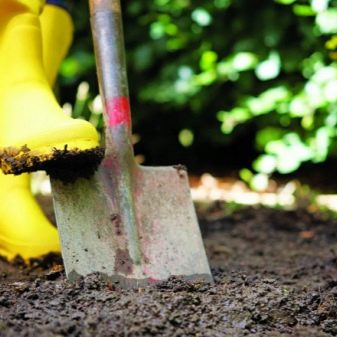

Growing seedlings
In cold regions, Chinese cabbage can be grown in seedlings. To grow early cabbage at home, you need to sow it in the second half of March. When preparing a crop, which will be stored until winter, seeds are planted at the end of June.
Selection of container and seeds
First of all, the gardener needs to prepare the seeds and container. Purchased planting material does not need preliminary processing. But the seeds collected by hand must be germinated in advance. This is done very simply. Place the seeds between layers of damp gauze or cloth. In this form, they need to be sent to a warm place for several days. It is better to select separate containers for planting seeds.
The fact is that Peking cabbage seedlings do not tolerate transplanting well. Therefore, it is best to choose small pots or cups for her. In advance, you need to take care of the preparation of the soil. You can buy a special blend at gardening stores or make your own. For this, nutrient soil and peat must be mixed in equal proportions. Next, the soil mixture must be disinfected using a solution of potassium permanganate.
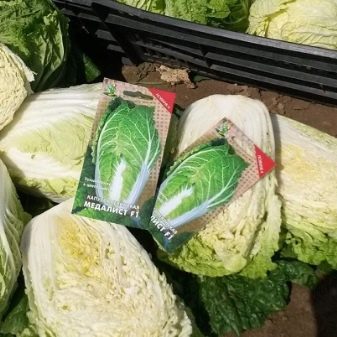

Sowing
After filling the containers with soil, you can immediately plant seeds in the soil. Usually 2-3 grains are placed in each glass. After planting, the soil is sprayed with cold water from a spray bottle. Peking cabbage planted in this way grows very quickly.
After the emergence of seedlings, containers with young plants are placed on a windowsill or a glazed balcony. If possible, Chinese cabbage can also be stored in a greenhouse at this time. Seedlings should be regularly inspected and watered. 8-10 days before planting in open ground, it must be hardened. To do this, containers with seedlings are briefly taken out into the street or on an open balcony.
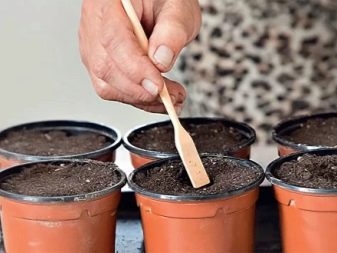

Transfer
You can plant seedlings in the soil 2-3 weeks after sowing the seeds. This procedure should be carried out in the morning or in the evening. In cloudy weather, you can do this at any time of the day. Seedlings must be planted carefully. To begin with, the seedlings must be watered abundantly. After that, the seedlings are taken out of the pots along with the earth. This must be done carefully so as not to damage the fragile roots.
Small holes are pre-dug on the site. Half a glass of ash is added to each of them. Next, seedlings are placed in these holes. The roots are carefully sprinkled with earth. After that, the plants are watered abundantly. After planting, the seedlings must be protected from the sun. If the seedlings are not shaded, foliage can get burned. This will lead to the death of seedlings.
In order for the plants to take root better, they can be treated with a growth stimulator before planting.
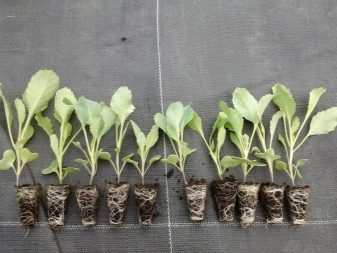
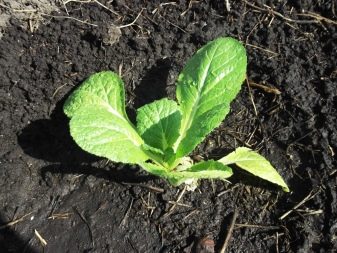
Care
Proper care of it also plays an important role in the cultivation of Peking cabbage. Agricultural technology includes top dressing, regular mulching and watering.
Top dressing
For feeding Chinese cabbage, you can use both mineral and organic fertilizers. On average, young plants are fed three times per season. For the first time, fertilizers are applied to the soil 10-12 days after transplanting seedlings. During this time, you can use a solution of chicken manure or mullein. It can also be replaced with herbal infusion or compost tea. The second feeding is carried out 1-2 weeks after the first. At this time, you can fertilize the plants with yeast. The product is diluted in water, insisted, and then used for watering plants. You need to use yeast fertilizers only in warm weather.
Otherwise, there will be no benefit from them. You can increase the efficiency of the fertilizer by adding a small amount of sugar or bread crusts to a container with yeast feeding. Attention should be paid to feeding plants even when they are in bloom. If the cabbage has bloomed, it means that soon heads of cabbage will begin to form on the site. At this time, the plants can be fed with boric acid. The pharmaceutical product is diluted in warm water, and then used to spray the area. This must be done carefully.
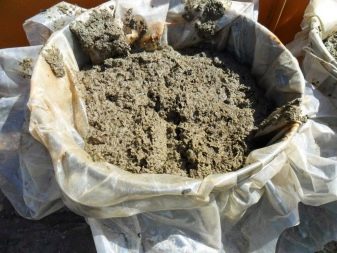

Watering
Watering cabbage beds also plays an important role. Since these plants are moisture-loving, they need to be watered very often and abundantly. Cool water is used for this. If the summer is rainy, the amount of watering should be reduced. In the heat, the culture, on the contrary, is watered more often. Experienced gardeners know that they stop watering white cabbage a few days before harvesting. At the same time, Beijing continues to be watered until the very harvest.
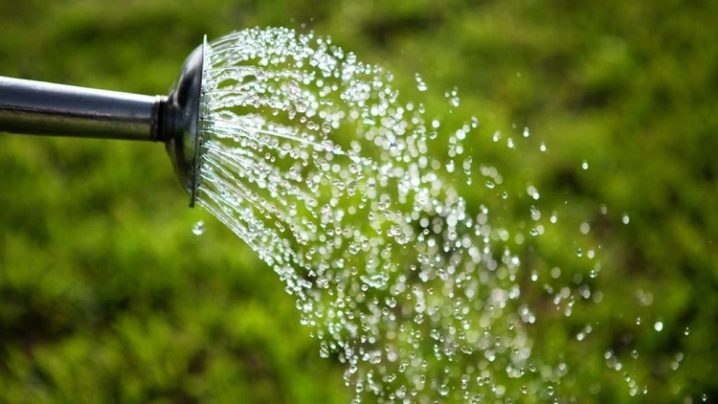
Mulching
So that the cabbage does not start to rot, it is recommended to loosen the soil after watering. This must be done carefully, trying not to damage the roots of the plants. You cannot sprinkle Chinese cabbage. Instead, the plants are mulched. It doesn't take too long.
As a rule, cabbage is mulched with peat and dry straw. Dried weeds can be used instead. The mulch layer needs to be renewed regularly. If done correctly, the soil will be sufficiently moistened. In addition, it does not have to be loosened regularly.

Shelter
If the cabbage was planted early in the soil, it is important to provide additional plant cover. Most often, agrofibre is used for this purpose. It helps to protect young greens from temperature changes and sudden gusts of wind.In the future, cabbage grown in such conditions ripens earlier. This technology also allows you to spend less time controlling weeds and watering cabbage beds.
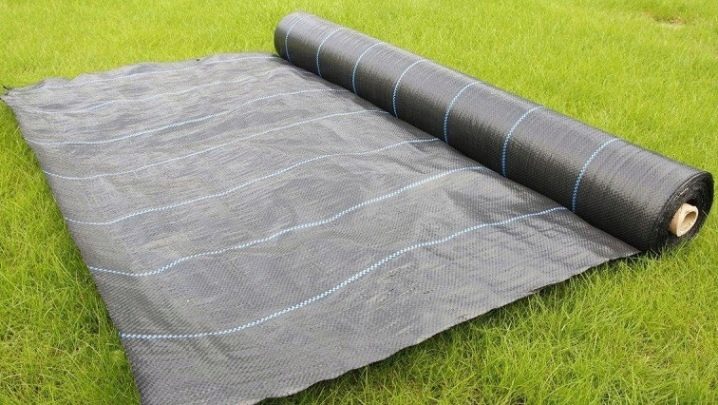
Diseases and pests
Peking cabbage is very often attacked by various pests. The following insects pose the greatest danger to plants.
- Cruciferous flea. These insects harm all varieties of cabbage. They damage plants quite quickly. Therefore, it is important to start pest control as early as possible. It is best to use a solution of 200 grams of dry tobacco dust and two liters of boiling water for this purpose. The product is infused for several days, and then filtered. The resulting product is diluted in water. Some gardeners add a small amount of liquid or grated laundry soap to the container. Next, the product is poured into a spray bottle. After that, you can start processing the plants.
- Slugs. These pests are also common in cabbage beds. Gardeners prefer to fight them with folk remedies. If there are not very many pests on the site, they can be collected by hand. If desired, cabbage can also be treated with a vinegar-based solution or infusion with mustard powder. You need to use these products every 3-4 days. This is best done in the evening. Acting according to this scheme, you can get rid of pests very quickly.
- Aphid. Aphids are also dangerous to culture. These pests attack cabbage beds very often. But to combat them, it is quite possible to use folk remedies. Most often, plants are treated with infusions with a pungent odor. It can be a product prepared on the basis of marigolds, tomato or potato tops.
Having found aphids in your area, it is important to get rid of the ants that are spreading it. Anthills are usually just poured with boiling water.
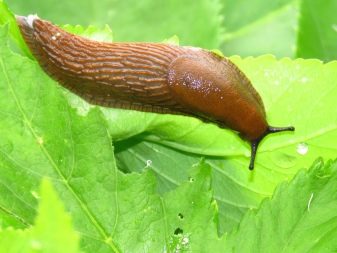
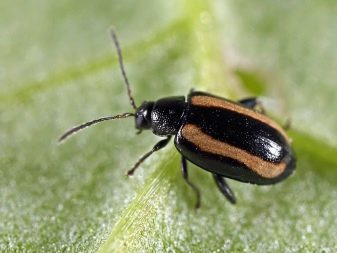
When planning to plant cabbage on your site, you should also learn about the diseases that pose a danger to these plants.
- Keela. This disease is easy to notice. Small bubbles form on the roots of the plants. Over time, cabbage foliage begins to turn yellow and wither. Considering that most often this disease affects plants planted in acidic soil, it is recommended to lime the soil for prevention. If the bushes have been affected too much, it is recommended to remove them from the site. It is not recommended to plant cabbage in this place next year.
- Mucous bacteriosis. This disease usually develops in the middle of summer. Infected plants turn yellow and bloom. An unpleasant smell of rot begins to emanate from them. The heads of cabbage do not have time to fully ripen, since the plants die too quickly. To protect cabbage from this disease, it is recommended to water it with a weak solution of potassium permanganate during the growing season. The beds should also be sprinkled with clean ash. If the plants do get sick, they should be destroyed.
- Downy mildew. This disease can affect both seedlings and adult plants. The foliage is covered with dense oily spots with a grayish bloom. Cabbage development slows down. To save their beds, they need to be sprayed with a solution of copper sulfate. In some cases, a small amount of liquid soap is added to the liquid. It is worth treating the site with such a tool several times in a row.
- Blackleg. This is another dangerous fungal disease. It affects young seedlings. The main symptom of this disease is stem blackening. A diseased plant cannot develop normally. It grows poorly and dies over time. Therefore, it is very important to prevent the development of this disease. To do this, the soil and seeds are disinfected before planting cabbage. In the future, it is important for young seedlings to provide proper care. In this case, it will grow healthy and resistant to fungal diseases.
- Gray mold. This is another fungal disease.She can hit young plants at any stage of culture development. The foliage of the infected plants is covered with brown spots. Over time, they turn gray and grow in size. It is worth fighting this disease using quality fungicides. If the plant cannot be saved, it is better to remove it from the site and destroy it. This will help stop the spread of the disease.
With proper care, Chinese cabbage rarely gets sick and is almost not attacked by pests.


Harvesting and storage
Gardeners usually pick cabbage in the summer. It is not necessary to wait until the heads of cabbage are completely tied. By cutting off the heads of cabbage, gardeners allow new ovaries to form. Full cleaning of the site is carried out in the fall. You need to pick cabbage correctly. This is best done in dry weather. Heads of cabbage are cut at the very ground. This should be done with a sharp knife. If the heads of cabbage are wet, it is recommended to dry them in a well-ventilated area. After that, the cabbage is sent for storage.
Usually the heads of cabbage are moved to the cellar or basement. You can store cabbage in this form for about a month. You can increase the shelf life of Chinese cabbage by wrapping it in paper or cling film. The harvested crop can also be harvested. This can be done in several ways.
- Drying. Before drying the cabbage, the head of cabbage must be cleaned of damaged foliage. After that, it must be cut into strips. Next, the cabbage is placed in an electric dryer or oven. Drying time depends on which preparation method has been chosen. It is recommended to store dried cabbage in tight fabric bags or paper bags. You can use such a product as a seasoning for various dishes.
- Freezing. Cabbage is stored in the freezer for a long time. The product is also pre-shredded and distributed into containers or bags. The product is usually used for making various soups. You can add cabbage to the pan frozen.
- Leaven. If you have time, you can ferment the cabbage. For this, 5-6 kg of cabbage is finely chopped. Vinegar, water, salt and sugar are added to a container with herbs. The mixed products are placed in a jar or barrel. Oppression is installed on top. Store cabbage in a warm room. After 2-3 days, the cabbage will be ready for use. This cabbage can be eaten fresh or used for making salads.
In any form, Chinese cabbage retains not only a pleasant taste, but also its benefits. You can eat it on a regular basis.
Summing up, we can say that any gardener, if desired, can grow such a crop on his site. The main thing is to pay enough attention to caring for the plants.
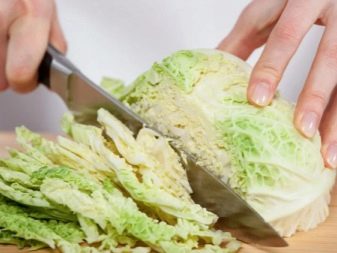
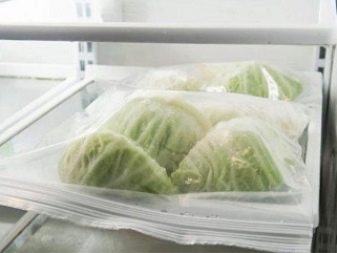













The comment was sent successfully.